Exposure to international stocks is necessary for your portfolio as you want more diversification. During the lost decade of the 2000s, while U.S. stocks were flat, global stocks rose, giving investors portfolios more movement.
Building a 3-fund portfolio allows investors to have more diversification by adding in some more international exposure. But which one should you invest in? Luckily, Vanguard has made international investing much more straightforward with its VEU and VXUS ETFs.
From a glance, both ETFs look incredibly similar, nearly identical at times. But, some subtle differences between the two may influence your decision. So, let's dive into these two funds to help you decide which is best for your portfolio.
Overview of VEU vs VXUS:
Let's start with an overview of both funds:
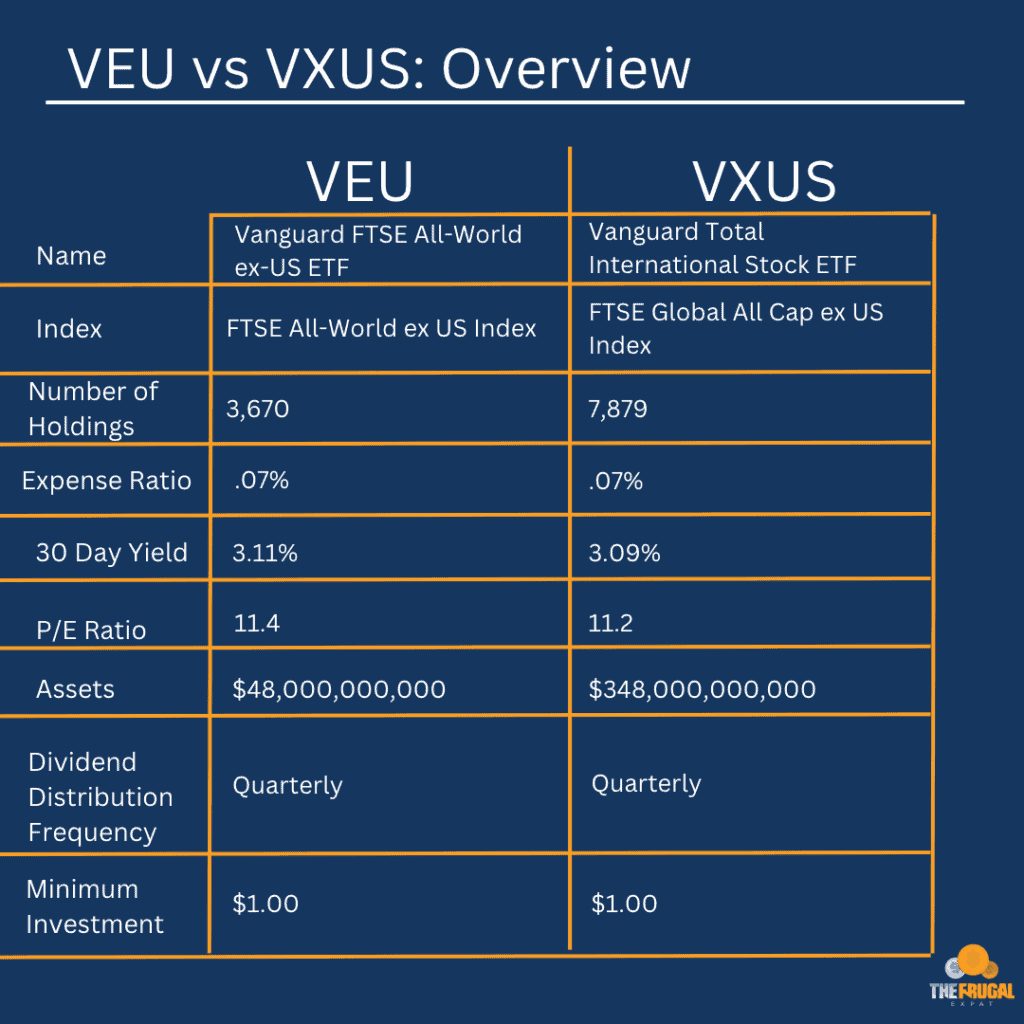
VEU: Vanguard FTSE All-World ex-US Index Fund
VEU is an ETF, an exchange-traded fund from Vanguard comprised of large and mid-cap non-US stocks. With 3,670 individual holdings, based primarily out of Europe, the Pacific, and other global emerging markets, VEU provides solid exposure to most non-US markets.
For investors looking for exposure to solid international companies, VEU is a great fit.
VXUS: Vanguard Total International Stock Index Fund
VXUS is another ETF offered by Vanguard that provides exposure to over 99% of non-US-based stocks worldwide. Because VXUS focuses on all stocks rather than only mid and large caps, it has more than double the number of holdings as VEU, coming in at 7,879.
For investors looking for exposure to the entire non-US market, VXUS is an excellent addition to your portfolio.
VEU vs VXUS: Different Approaches To Reach The Same Goal
Despite tracking different indexes, VEU and VXUS have the same primary objective: Give your portfolio exposure to non-US markets and equities in one simple to invest in ETF. However, they go about this in different ways.
VEU: The Established Approach
VEU's approach to international equities is to invest only in mid and large-cap stocks as defined by market capitalization. This means that this ETF only invests in companies with a market capitalization of 2 Billion or higher (The mid-cap range is defined as between $2 billion and $10 billion, and the large-cap is defined as 10B+).
Market Capitalization can be found with the following formula:
Current Price Per Share x Number of Outstanding Shares = Market Capitalization
Mid and large-cap stocks are traditionally more extensive, established businesses with proven business models that succeed in their industry. These companies will be like Nestle, Taiwan Semiconductor, and Samsung.
These stocks are usually seen as less risky than small and micro-cap stocks because these businesses and brands are generally more established, profitable, and have a significant, proven impact on their industry with room to grow.
Overall, this means that VEU's holdings are a less risky approach to international diversification than VXUS's.
VXUS: The “Catch All” Approach
VXUS's approach is similar to VEU because it does invest in the same mid and large-cap equities as VEU. Still, it also holds small and micro-cap stocks (defined as having a market capitalization between $50 million and $2 billion).
These small and micro-cap stocks add risk to the portfolio of holdings in VXUS because they are small, less established, and less proven businesses that may still need to be profitable.
Because VXUS has a riskier list of holdings, investors should expect a higher return if these smaller companies increase market value. However, investors would expect the price to fall further during a market downturn than a less risky fund. With the diversification of VXUS, not one stock or sector is too concentrated. Giving the fund a balanced approach can complement a total U.S. market ETF like VTI.
VEU vs VXUS: Returns
Despite the differences in their holdings and indexes, VEU and VXUS have had near-identical returns since inception.
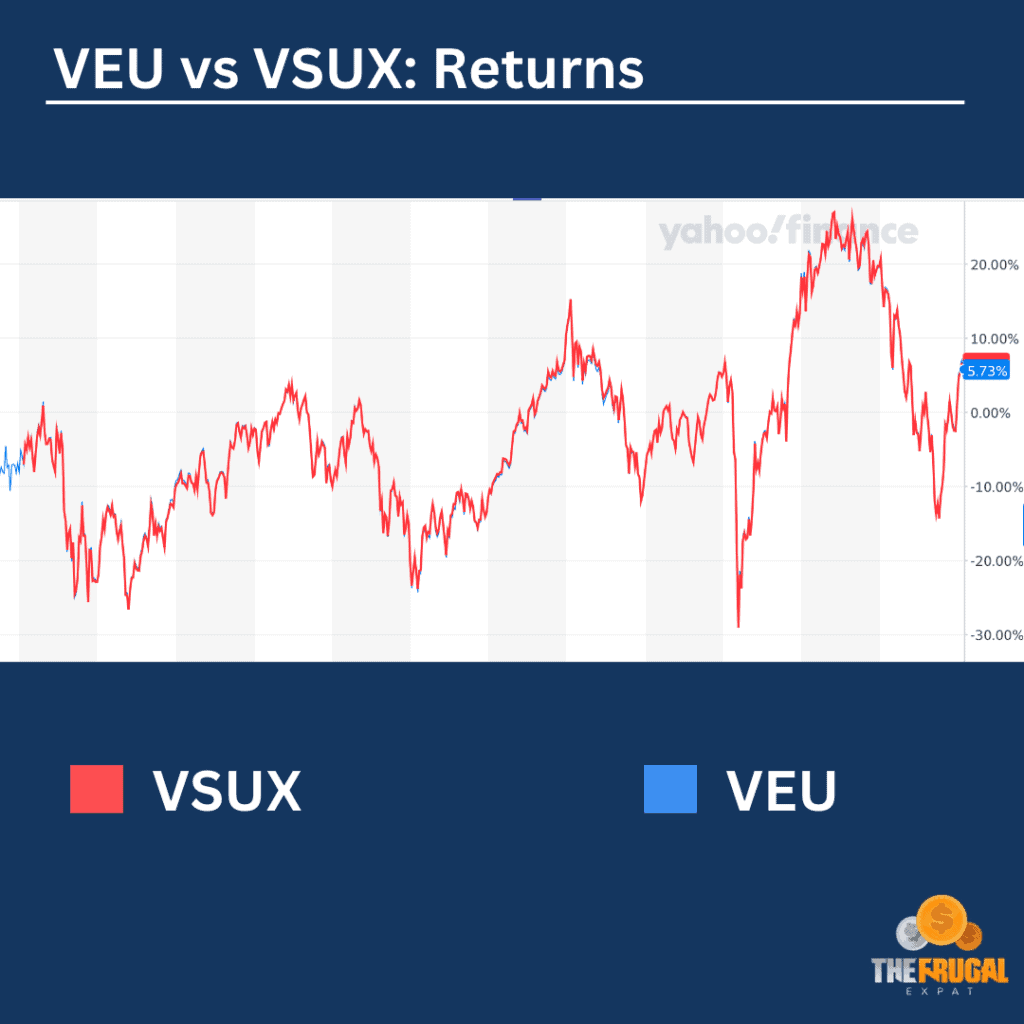
If you take into account and start them at the same, their return is identical. Since its inception, VXUS has had a slight edge over VEU, returning 4.01% against VEU's 3.35%. However, VEU began trading four years before VXUS in 2007, before a significant market crash in 2008-2009.
Over the last 10 years, their performances have been very similar, with VEU returning 4.57% and VXUS returning 4.58%. That said, because VXUS has a broader range of holdings, including mid and micro-cap stocks, one would expect VXUS's return to be higher.
Year-to-date (as of the time of writing), both funds have returned a solid 8.74% after having a down year in 2022. Last year, VEU fell 6.01%, and VXUS fell 6.17%. However, this year's and previous year's performances are still beating the S&P 500.
Here is a chart of how each fund has performed:
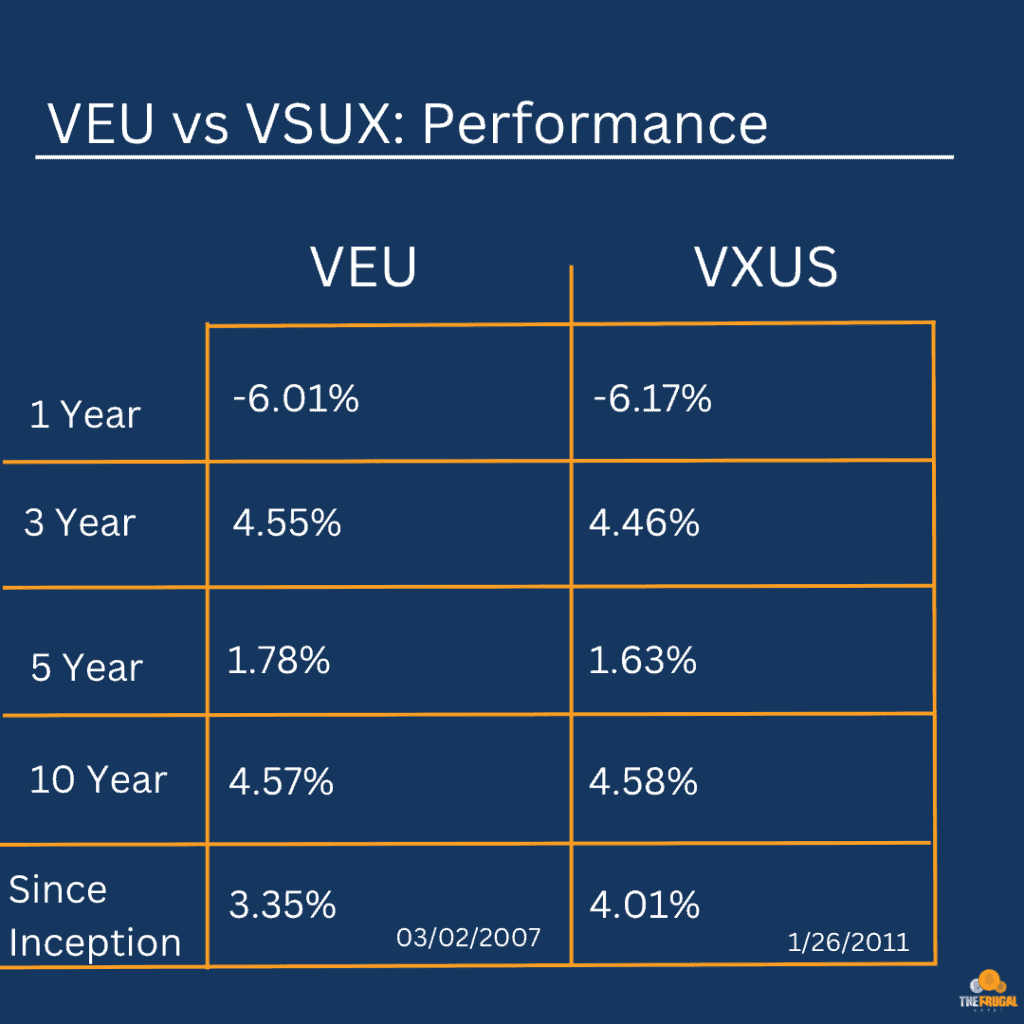
VEU vs VXUS: Holdings
VEU and VXUS's holdings are weighted by market cap to match their underlying indexes. Because of this, this means that both funds have nearly identical top 10 holdings, albeit in a slightly different order.
While VEU selects its holding by market cap, restricting itself to only large and mid-cap stocks, VXUS's strategy is to buy and hold as many non-US equities as possible. As such, the funds have a similar distribution across international markets, with some slight variations:
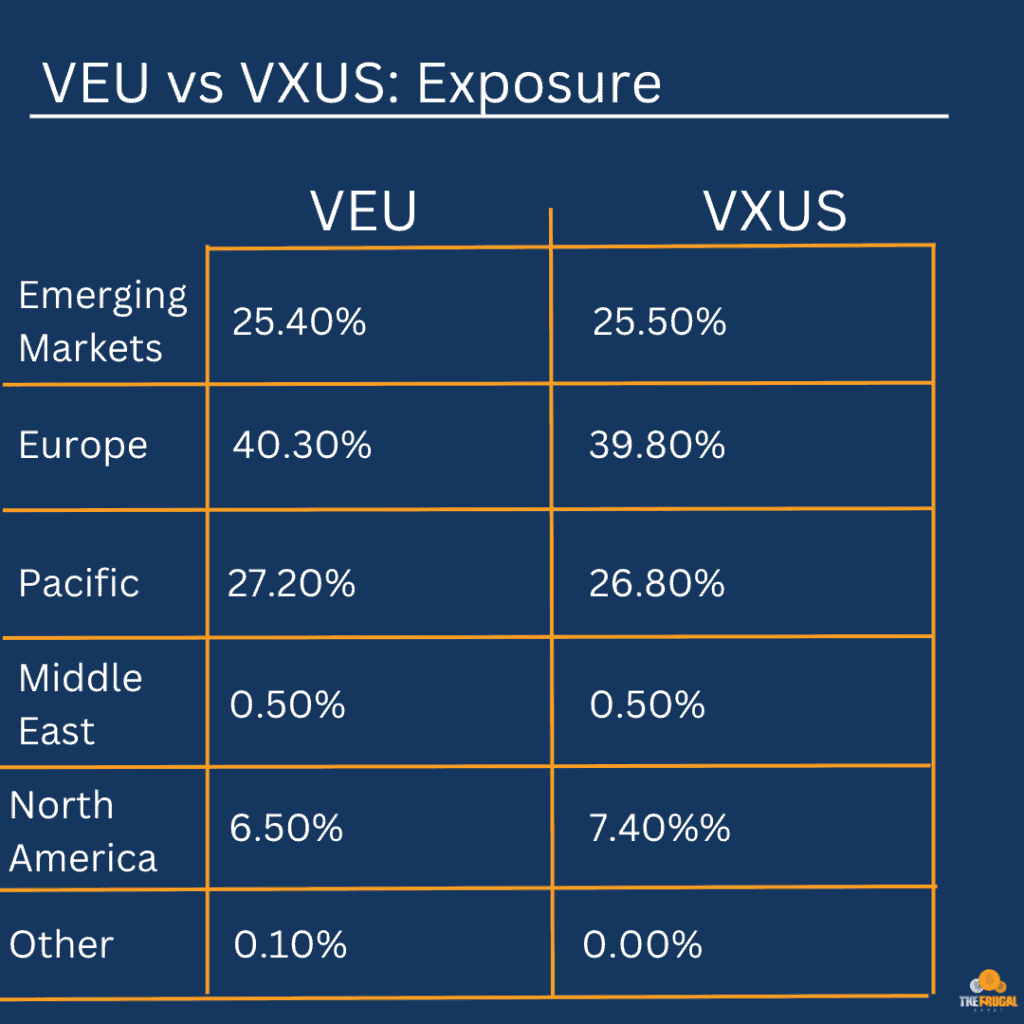
VEU: Holdings
The top 10 holdings in VEU only make up about 9.23% of the fund's total assets. With over 3,000 stocks in its portfolio, VEU is very well diversified, and if one stock falls, even one in the top 10 holdings, it shouldn't have too much of an effect on the general fund itself.
VEU's top 10 holdings are comprised of large, recognizable brands such as Nestlé, Tencent (creators of Fortnight, the video game), AstraZeneca, and Moet Hennessy Louis Vuitton.
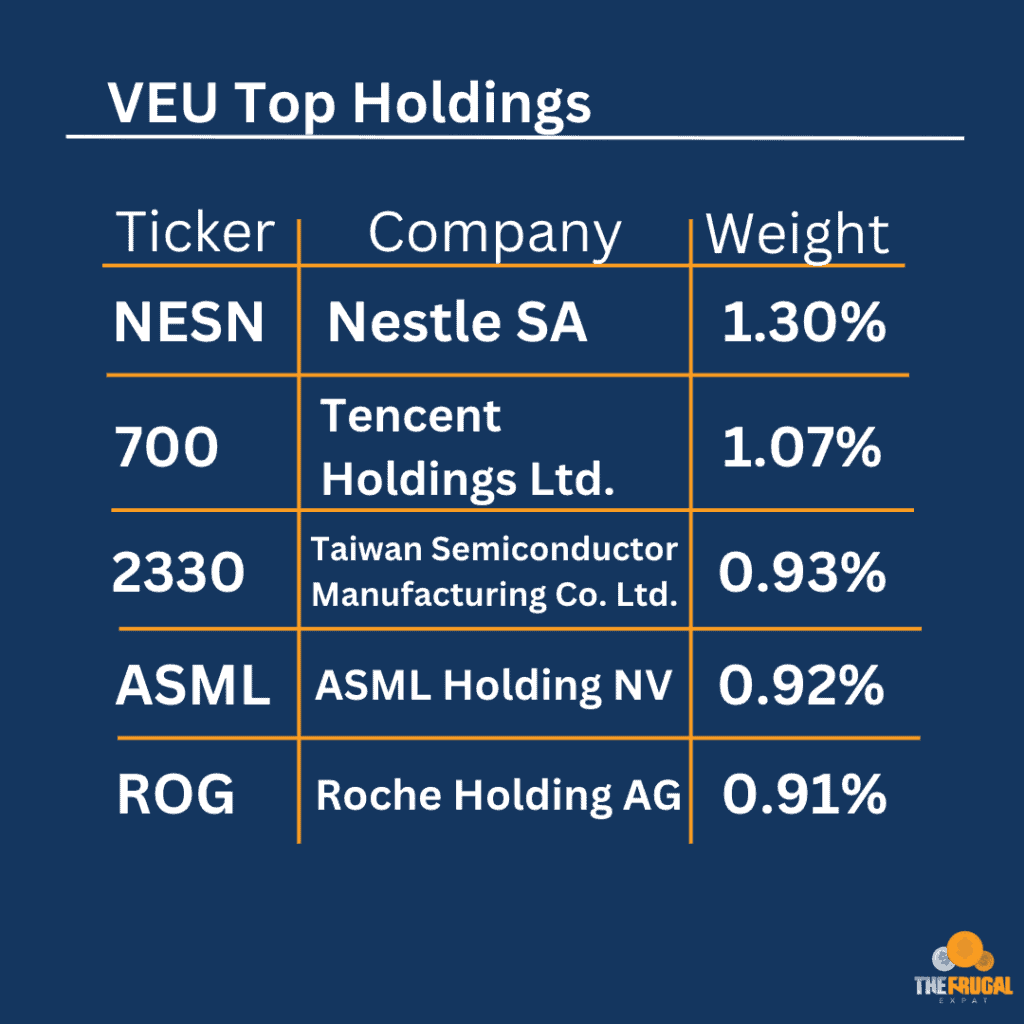
VXUS: Holdings
Similarly, VXUS's top 10 holdings comprise only about 8.79% of its total assets. Again, with over 7,800 stocks in its portfolio, VXUS is exceptionally well diversified, even more so than VEU.
Because of the large number of holdings and market cap weighting, most holdings make up less than 0.01% of the total assets each. So, while VXUS has a riskier portfolio due to its investments in small and micro-cap stocks, these stocks make up a tiny percentage of the overall holdings. So, even if one of these small companies goes under, it will have minimal effect on the fund overall.
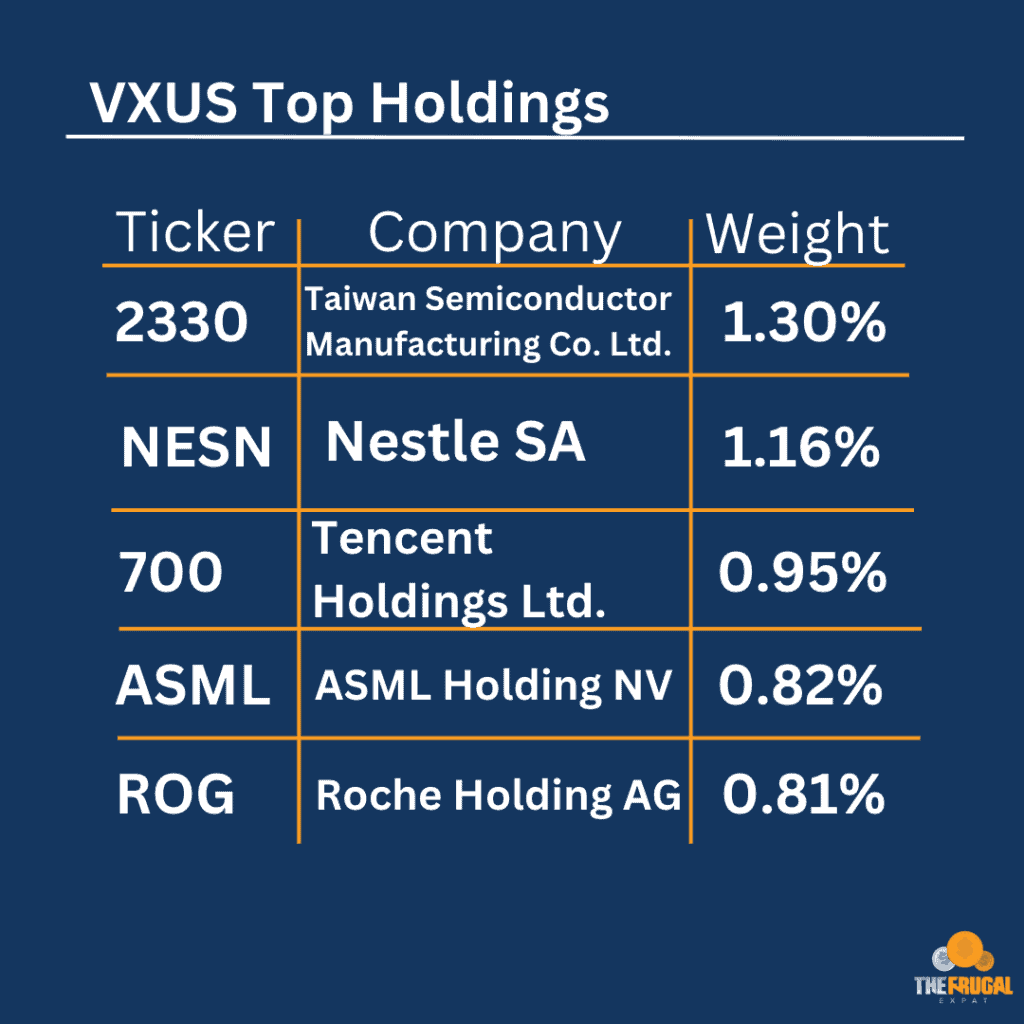
As you may have noticed, both funds have the same top-5 holdings, with slightly different weightings.
VEU vs VXUS: Dividend Yield
While dividends are not essential to all investors, and neither of these funds is focused on dividend yield, it can help differentiate between the funds.
For anyone looking for income-producing investments, there are better options, even when looking specifically for international income funds. As of the time of writing, VEU has a dividend yield of 3.11% and paid out $1.5639 in dividends per share in 2022. Comparatively, VXUS has a dividend yield of 3.09% and paid $1.599 in dividends per share in 2022.
Which Is Right For Your Portfolio?
Truthfully, each of these funds is very similar in terms of holdings, performance, dividends, and expenses, and you can not go wrong with either. Both funds have great qualities, are exceptionally well diversified across several international markets, and can provide significant global diversity to your portfolio.
The only real differentiating factor between the two is the difference in risk. As previously mentioned, VXUS is a riskier investment due to its investment in smaller companies, while VEU is a safer investment because it only invests in larger companies. So, for investors with an enormous appetite for risk, who can handle more volatility, such as younger investors with a longer time horizon, then VXUS is probably the better addition to your portfolio. However, for investors with a shorter time horizon and less appetite for risk, then VEU is better for your portfolio.

I’m Steve. I’m an English Teacher, traveler, and an avid outdoorsman. If you’d like to comment, ask a question, or simply say hi, leave me a message here, on Twitter (@thefrugalexpat1). Many of my posts have been written to help those in their journey to financial independence. I am on my journey, and as I learn more I hope to share more. And as always, thanks for reading The Frugal Expat.







